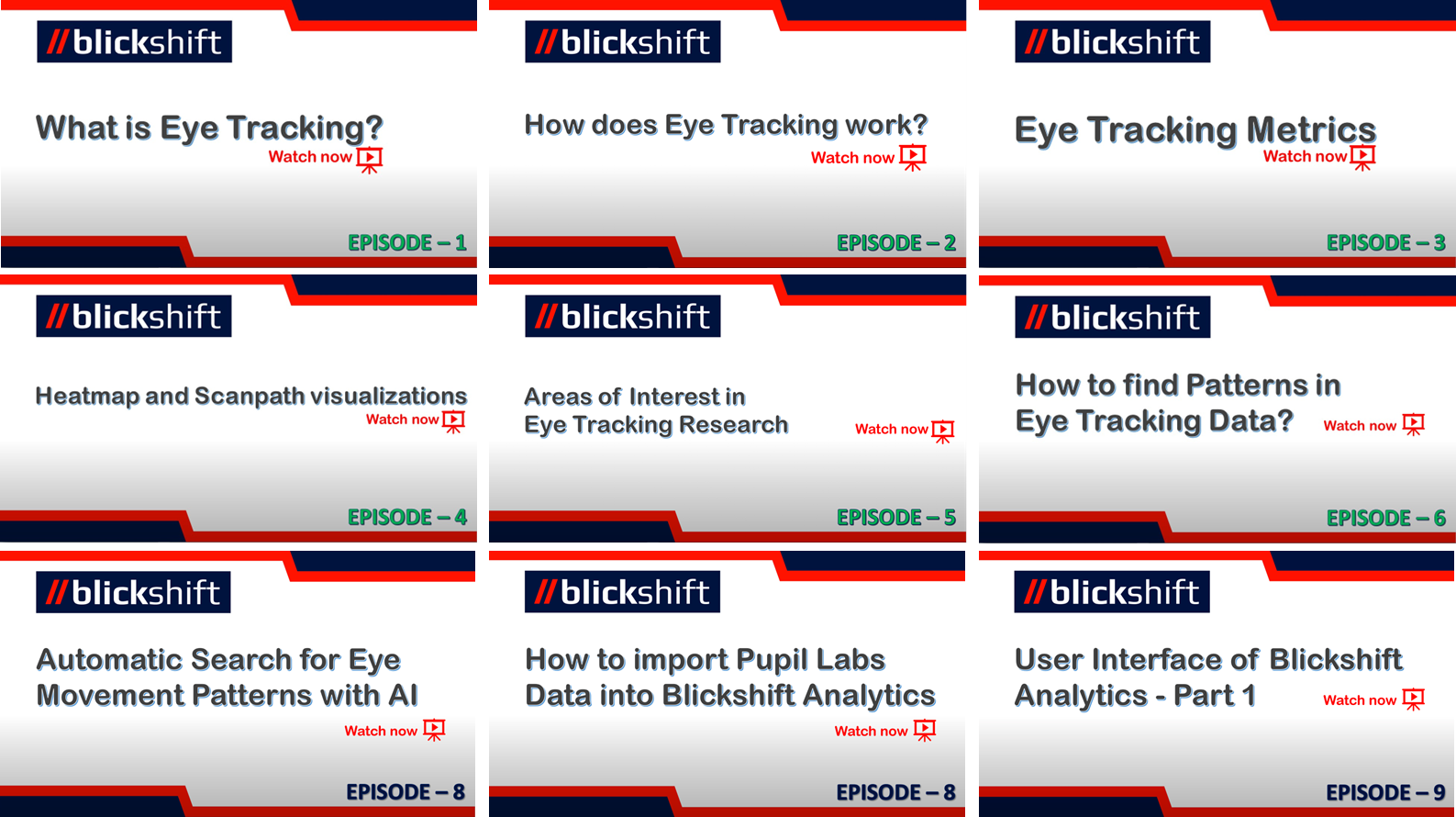From the first tutorial to a series of tutorials on YouTube
When conducting and analyzing eye tracking experiments it is very important to know the basics of recording eye movements. But not everyone on the team needs to know everything. Researchers want to learn how to set up user experiments with eye tracking and how to get very good quality data. Engineers want to know how to implement all necessary tools for setting up an experiment and how to connect different recording and analyzing components in their experimental setup. Finally, managers want to understand why and how eye tracking provides additional information for customers or how this technology can be used as a tool to speed up the development process of a new product.
During our long years of work with eye tracking technology, first as scientists at the University, and later while building up our company, we have met all of them. And we learned to see the eye tracking world from the different perspectives of managers, researchers, and engineers. We started as scientists who always want to find the most optimal solutions and publish scientific reports with high levels of detail. In industry and daily use of eye tracking, we learned, this time-consuming process is most times not needed.
What is necessary for the daily practical use of eye tracking, is to know the principal points during planning, conducting, and finally analyzing an eye tracking experiment and to deliver results in different levels of detail adapted to the requirements of the different audiences of the reports in a short time. Learning these principal points requires gaining experience in practice. The more experience you typically have, the more you know about what to care for in an experiment. The downside is that gaining experience takes time.
For this reason, we have started filming and creating tutorials on all aspects of eye tracking experiments. These tutorials will provide you with a shortcut based on our experience. The tutorials are aimed at giving beginners the first introduction as well as which covers advanced aspects of this amazing technology for experts.
Many of our videos will follow the same structure:
· Why is the aspect of this tutorial important?
· What has to be set up or prepared to get good results?
· How will these results be generated and how can software tools provide optimal support for this?
You will find the first three tutorials and all upcoming videos on our YouTube channel.
On Twitter we will announce once we have uploaded a new video. Alternatively, you can follow us on LinkedIn where we are also posting news about our tutorials, products and services.

